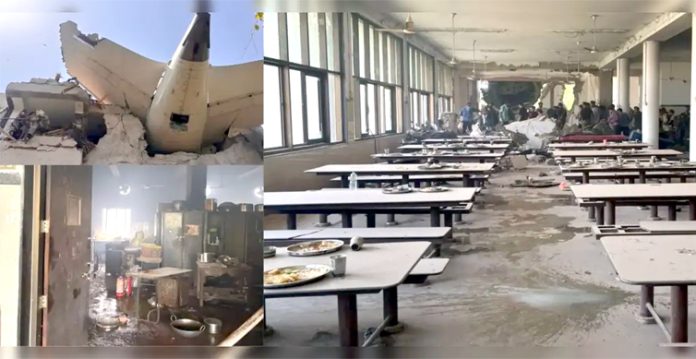The crash of Air India flight AI-171 near Ahmedabad airport has caused huge loss and sadness. While investigators look into the aircraft, weather, and pilot actions, another serious issue is becoming clear — poor urban planning near airports can turn such crashes into bigger disasters.
In this case, the plane crashed into a medical college hostel, killing many people on the ground. Sadly, this could have been avoided if better building rules were followed near the airport.
This is not the first time such a tragedy has happened. In 2020, a Pakistan International Airlines flight crashed into a crowded area in Karachi, killing 97 people. In 2012, a Nigerian plane crashed into a Lagos suburb, causing many deaths. Even in New York, a plane crash affected a residential neighborhood. This list has many accidents.
These examples show why it’s so important to keep the areas around airports safe. Experts agree that the 5-kilometre zone around any airport should be treated as a critical safety zone. It’s not just about tall buildings — it’s about how many people live or work in these areas.
In the past, airports were built far away from cities to avoid such problems. For example, when airports were first built in Delhi during British rule, there were very few buildings nearby. Today, however, cities have grown in all directions, and airports are now surrounded by homes, schools, and businesses.
This growth brings many challenges. People want to live near airports for better transport links. This pushes real estate prices up and leads to crowded development, sometimes right next to the runway.
India’s aviation authorities like DGCA and AAI have strict rules for construction near airports. Every major airport has a zoning map and follows Obstacle Limitation Surfaces (OLS) — a set of 3D rules that help planes land and take off safely. Buildings near airports must follow height restrictions, especially within 5 km of the runway.
In the AI-171 crash, the hostel building was likely within the allowed height. But the real problem was the dense population in that area. Even if the buildings are legal, having so many people near an airport makes any crash far more dangerous.
This raises an important question: Should we rethink how cities grow around airports? Some cities, like Hyderabad, already have. The old Begumpet Airport was replaced by a new one in Shamshabad, far from the crowded city centre.
Cities like Ahmedabad, Mumbai, and Chennai still have airports surrounded by houses and offices. If we want to prevent more tragedies like AI-171, we need better planning.
That could mean:
- Moving old airports away from cities
- Enforcing no-build zones or low-population areas near new airports
- Treating the 5 km zone as a life-saving buffer, not just a rule
In short, urban planning must focus not only on development but also on safety and the future. The AI-171 crash isn’t just about a plane — it’s about how close our cities have come to danger.
(This story is sourced from a third-party syndicated feed. Raavi Media takes no responsibility or liability of any nature. Raavi Media management/ythisnews.com can alter or delete the content without notice for any reason.)


